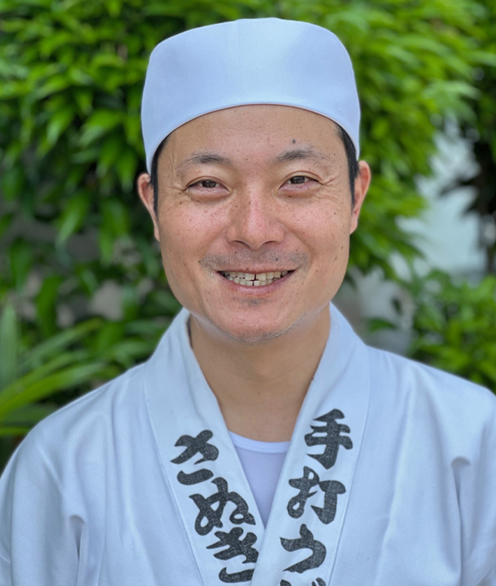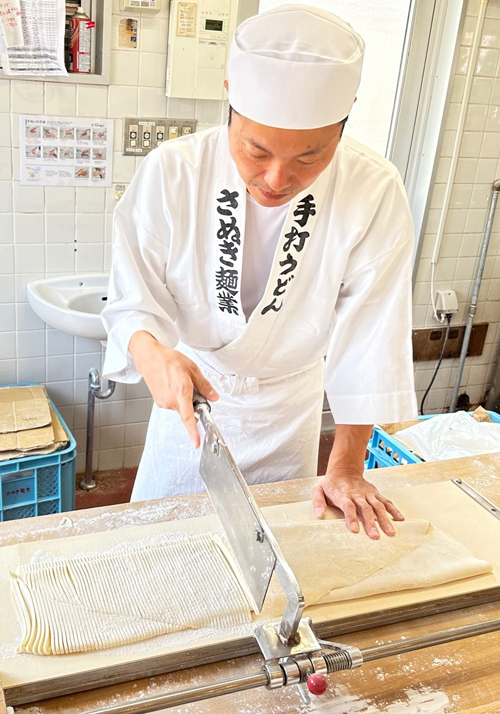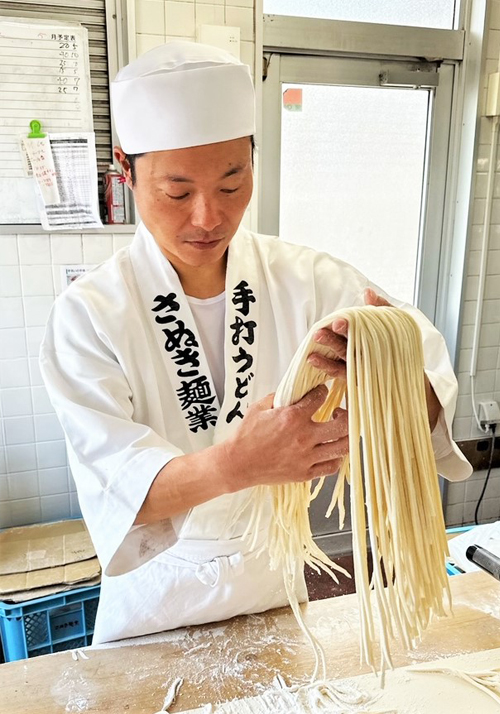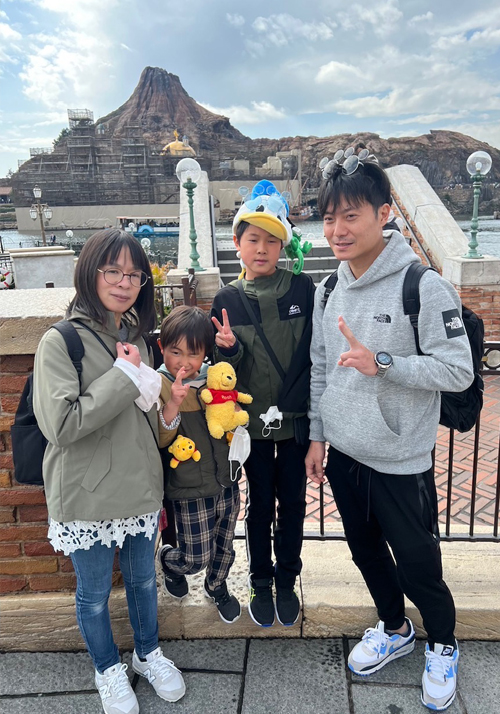Relay Talk
OKUBO Atsushi (Sanuki Mengyo Co., Ltd)

What is “Takamatsu” for me? Succession and development of food culture
“Good luck, and do your best!” While the faces of my club juniors who bid me farewell after my graduation were still lingering in my mind, I got off the Shinkansen train at Okayama station to change to the Marine Liner. After some swaying on the nostalgic thundering train and passing a tunnel… “The Sea!”… Islands, large and small, appear beyond the sea dazzling in the sunlight. The train is running – or it might be better to say “flying” – 60 meters above the sea.

After reaching the middle part of the Seto Ohashi Bridge, the islands of Ozuchijima and Kozuchijima appear far away on the left… “That’s beautiful. After all, Shikoku is a good place…” With that thought, I stretched my back and trembled with excitement as the beautiful scenery and clear sky blended with a new world ahead of me. When the flying train soon landed from the sky, it took a long curve to the left, toward its final destination at Takamatsu Station. The scenery changed from the countryside to the cityscape, and eventually, the Symbol Tower appeared to announce the arrival at the destination. That is the arrival point for the train, but the departure point for me.
In high school, I was absorbed in kendo, and then chose a university with a strong kendo program to continue training and become No. 1 in Japan. Maybe it was worth the effort; I failed to become No. 1 but made the top 8 nationwide, and was promoted to 4th dan (instructor’s level). After graduating, I sought employment at a local government, but unfortunately failed to win “by ippon.” So I changed my mind, and found a job at a family udon shop (long-established shop dating back to great-grandfather’s generation more than 90 years ago); with a rolling pin instead of a bamboo sword, now I practiced aiming at No. 1 among hand-made noodle craftsmen.
In high school, I was absorbed in kendo, and then chose a university with a strong kendo program to continue training and become No. 1 in Japan. Maybe it was worth the effort; I failed to become No. 1 but made the top 8 nationwide, and was promoted to 4th dan (instructor’s level). After graduating, I sought employment at a local government, but unfortunately failed to win “by ippon.” So I changed my mind, and found a job at a family udon shop (long-established shop dating back to great-grandfather’s generation more than 90 years ago); with a rolling pin instead of a bamboo sword, now I practiced aiming at No. 1 among hand-made noodle craftsmen.

Even now, these memories of 20 years ago come to mind every time I see the Symbol Tower in Sunport Takamatsu. It was a pity to give up kendo, but I kept my chin up and stayed positive, and now I feel a sense of fulfillment in my work aimed at the succession and development of Kagawa’s food culture through udon noodles. These thoughts occurred to me several years after beginning the job, when I eventually could hand-make noodles on a half-professional level, and could demonstrate my skills from noodle kneading to cutting to tasting before an auditorium of about ten thousand people at a Toshiake (New Year’s) Udon Festival.
I was a half-professional level, however, the guests unanimously praised the appearance and taste of my noodles, and ate them with a happy smile. On that day, I felt on top of the world, and I decided then that I would “get even better to make the clients even happier.”
I am digressing from the subject, but I would like to take this opportunity to explain about “toshiake udon.” This is a new custom launched since New Year’s Day 2009 by our trade association (Sanuki Udon Promotion Association) to promote udon consumption. We wish for happiness of the year by eating udon topped with red ingredients during the first 15 days of the year, and recently this custom has increasingly gained public awareness. I hope that this trend will grow into a “new food culture.” If you have not experienced this treat, please come and enjoy it on the next New Year’s holidays.
I was a half-professional level, however, the guests unanimously praised the appearance and taste of my noodles, and ate them with a happy smile. On that day, I felt on top of the world, and I decided then that I would “get even better to make the clients even happier.”
I am digressing from the subject, but I would like to take this opportunity to explain about “toshiake udon.” This is a new custom launched since New Year’s Day 2009 by our trade association (Sanuki Udon Promotion Association) to promote udon consumption. We wish for happiness of the year by eating udon topped with red ingredients during the first 15 days of the year, and recently this custom has increasingly gained public awareness. I hope that this trend will grow into a “new food culture.” If you have not experienced this treat, please come and enjoy it on the next New Year’s holidays.

There is much instability in today’s world, including the issues of Ukraine and Taiwan, concerns about economic recession due to inflation control, and financial turmoil; however, this spring we can finally see an exit from the COVID-19 pandemic that lasted for three years. International flights at the Takamatsu Airport have begun to reopen, and one can see more inbound tourists in Ritsurin Garden or in the shopping districts of Takamatsu. As regards domestic the economy, there are signs of a virtuous cycle to overcome deflation as wages catch up with price rises.
Let us be firm as Sanuki udon and do our best to ride this big wave!
Let us be firm as Sanuki udon and do our best to ride this big wave!


